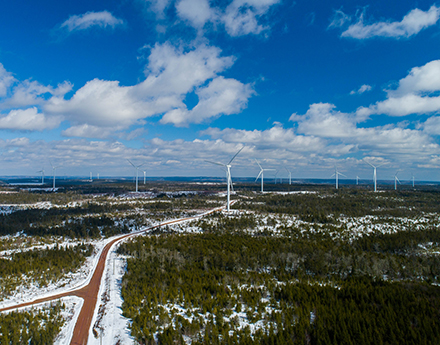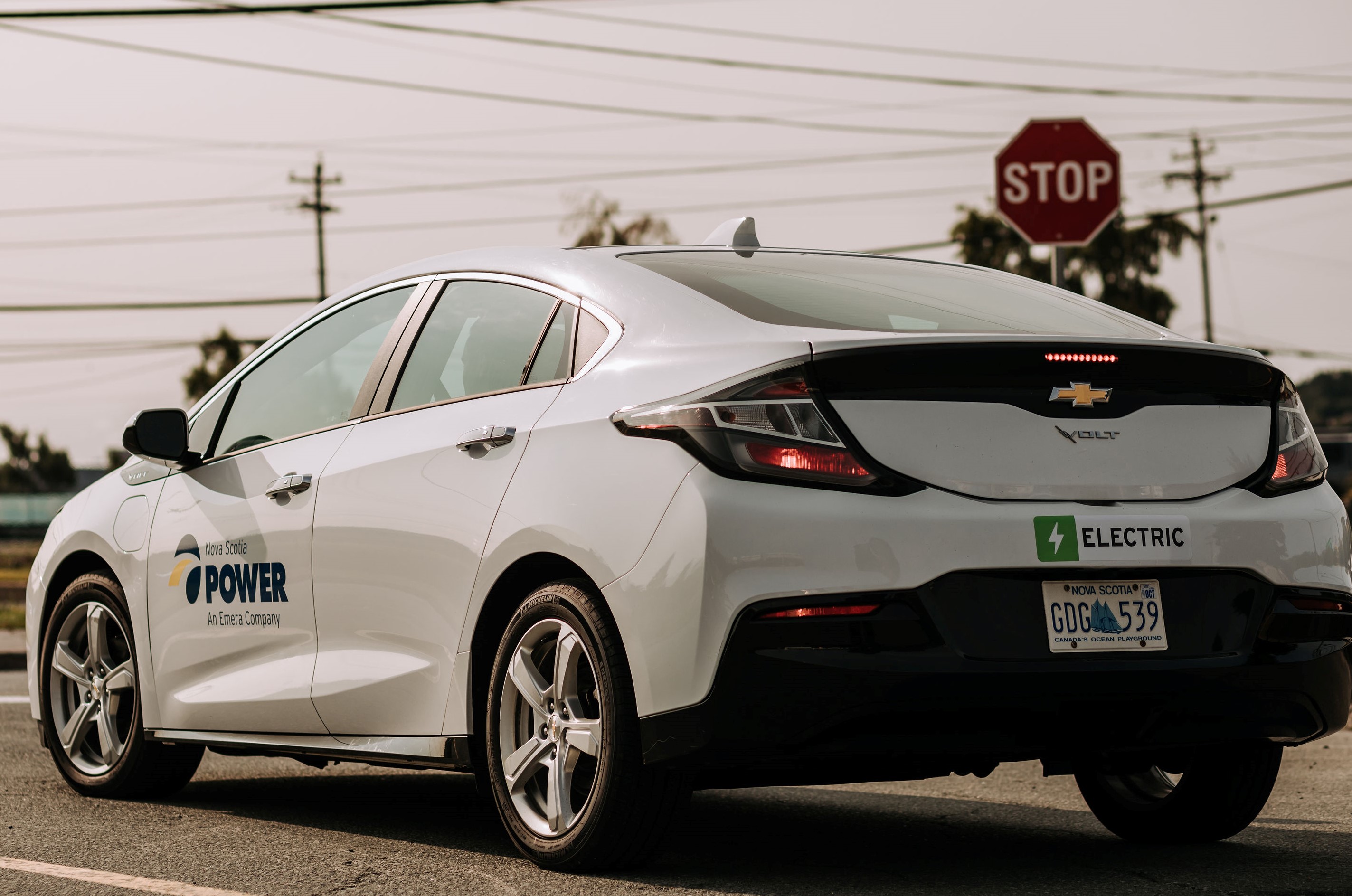Charging Forward: Atlantic Canada’s largest grid-scale battery facilities
We’re on a path to build a cleaner, greener future for our communities. It’s why we’re moving off coal and transitioning towards 80% renewable energy by 2030.
As we add more wind and solar power to our grid, we need to ensure that your electricity stays reliable. While it might feel like the wind never stops blowing here in Nova Scotia, we can’t count on it to blow consistently, or exactly when our customers need electricity. That’s where batteries come in.
Grid-scale batteries will help shape our energy future. They enable us to store renewable energy and bring it to the grid when we need it most. Think of the coldest winter days when we collectively turn up the heat, or the days when the wind isn’t blowing and the sun isn’t shining.
Powering a green Nova Scotia, together
Our Path to 2030 is one we are taking with all our customers, partners, and stakeholders. We were excited to be part of an announcement with the Canada Infrastructure Bank (CIB), sharing their commitment of $138.2 million towards our proposed grid-scale battery project, recently filed with the Utility and Review Board. This financial agreement between Nova Scotia Power, CIB, and Wskijnu'k Mtmo'taqnuow Agency (WMA)—the economic development organization that represents all 13 Mi'kmaw communities in the province—will enable these communities to make an equity investment in Nova Scotia Power in relation to the proposed battery projects. This relationship recognizes one of the many ways that Mi'kmaw communities will be partners in Nova Scotia’s clean energy future.
"The CIB’s goal of supporting innovative energy projects across the country has been reinforced with a landmark investment in Nova Scotia. It’s exciting to couple the largest battery storage investment in Atlantic Canada with our first Indigenous Equity Initiative loan. Through today’s investment, these 13 Mi'kmaw communities will be able to make an equity investment in infrastructure which will make a real difference for the province’s energy sector." Ehren Cory, CEO, Canada Infrastructure Bank
"Creating a greener future is a priority for the Mi’kmaw Nation and WMA is proud to be doing our part to bring about positive transformations to the energy industry. This investment in battery storage is a significant step towards true economic reconciliation and developing a more sustainable future for all Mi’kma’ki." Crystal Nicholas, President, Wskijinu'k Mtmo'taqnuow Agency Ltd.
In addition to the low-cost financing agreement with CIB, we have also secured $130 million for the proposed project through Natural Resources Canada's Smart Renewables Energy and Electrification Pathways Program, representing approximately one third of the project costs.
Three proposed battery sites
Our team has been exploring the best and most cost-effective options for incorporating grid-scale battery solutions to store energy.
We are proposing to build three 50 MW grid-scale battery storage facilities in Bridgewater, White Rock, and Waverley. If approved, early construction activities on these proposed sites will begin later this year and continue through 2026. The first of the three sites will be operational in 2025.
The sites were selected as they are close to our substations, making it easy to connect to our transmission system. This provides access to renewable energy sources anywhere on our electrical system, which could include our solar garden in Amherst, our wind farm on Digby Neck, all the way up to our largest hydroelectric plant in Wreck Cove, Cape Breton.
The benefits of batteries
Batteries not only help us grow our use of renewable energy, but they also bring reliability benefits. They are fast-responding, meaning if there are changes in electricity supply and demand, batteries help us be nimble and ensure a consistent flow of power.
Collaborating with communities
Last year, we hosted open houses in the three communities where our proposed battery projects are located. Community members were invited to learn more about our proposed developments and speak directly with project team members to ask questions and provide feedback. This feedback has been incorporated into the planning and the filing for the projects.
As we continue our journey towards 80% renewable energy, it’s critical that we listen to and engage with our customers, stakeholders, and communities across the province. This transition will take all of us working together to do the right thing for our region and for generations to come.
We invite you to follow along as we share updates and provide opportunities to get involved here.

Share This Post:






